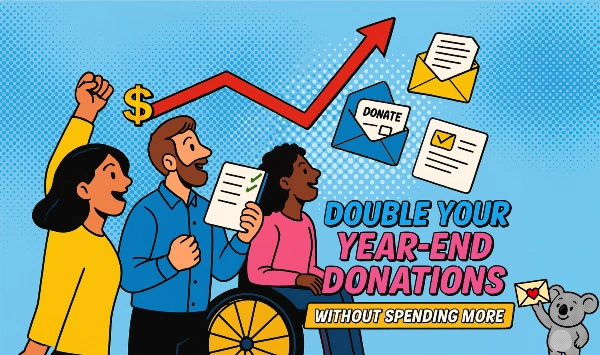Here at Moceanic, we love matched gift appeals.
Because they work so well to motivate donors to give.
They work so well, our online workshop on how to create effective match fundraising is called “Matching Giving Magic.” Because it’s almost like magic. Once you experience that kind of fundraising power, you’ll want to do it again. And again.
That raises an important question: Can you overdo match appeals? If you use them repeatedly, do they lose their power or become ineffective?
Short answer: NO.
You don’t need to fear any negative consequences of using match offers a lot.
There is no situation I’ve ever seen where a non-match offer works better than a match offer. You can keep adding match offers to your fundraising lineup. They will keep working. The only limitation may be how much match money you can get in the first place.
I work with organizations that use match offers much of the time. Some even use them all the time. Their overall revenue is amazing. But there is a way that repeated use of match offers does erode their power…
The more match offers you have in your schedule, the less “special” they become. Instead of doing 50% better than a non-match appeal, match appeals can become merely “better than average.” Not the dramatic boost you see when you first do it.
As more and more fundraisers discover the power of match offers, it’s not just you making them common in the donor’s mailbox or inbox. You’ll really see this on Giving Tuesday: your inbox is almost exclusively full of match offers. But what are you to do? If you try to differentiate by not using a match, you’re essentially “bringing a knife to a gun-fight.” You need to find other differentiators.
You’re still better off with match offers than without them.
And here’s the important thing: While adding more matches makes them less special, they still don’t get weaker than non-match appeals. You still come out ahead over time.
I’ve found that as match appeals proliferate, here are some things you can do to make them stand out:
Give match campaigns a name. Like “Holiday Match” or “[Local Community] Match.” I once had a client that had $1 million in matching funds. They wanted to call the campaign the “Million Dollar Match.” Just to be prudent they tested it (against something like “Winter Match”). The Million Dollar Match did much better.
Take different approaches for the reply device. Try a jumbo-sized reply. Use several of them, each for a single amount. Add involvement devices, like stickers that donors use to dramatize the match. Here’s a surprising approach that really works: Make three (or more) reply devises that look like checks, each for a different donation amount. It looks like it might confuse donors, but it really works – at least in places like the US where people still write paper checks.
Try different matching ratios. Matches don’t always have to be one-for-one. They can be two-for one (that is, they triple the impact of the donation) or more. But avoid matches that less than double the donation. That’s one thing that doesn’t really work.
So go ahead: add more matches to your fundraising line-up. It isn’t risky. When you discover something donors love to respond to, that is a good thing. And doing it more is usually more of a good thing.
Your critical year-end fundraising is just around the corner. How’d you like to DOUBLE your income from that campaign? Find out how at our all-new webinar, Double Your Year-End Donations Without Spending More. Sean Triner will lay out the complete plan that can dramatically boost your income this year!
Please share your experience by leaving your reply below. We’d love to learn from your experience.











